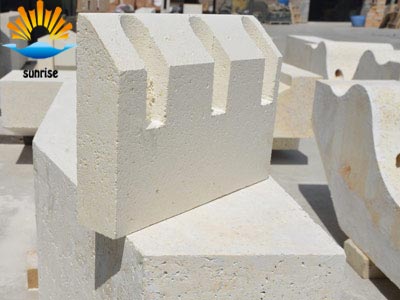Product
Fused Cast AZS Block
AZS Casting Type
AZS Ramming Materials
Fused Cast AZS TY-AZS41
Fused Cast AZS TY-AZS36
Fused Cast AZS TY-AZS33
Fused Cast Alumina Block
Fused cast Alumina Block TY-H
Fused cast Alumina Block TY-A
Fused cast Alumina Block TY-M
Fused Cast High Zirconia Block
Fused Cast Skid Rail Block
Silica brick
Magnesia Series Brick
Bonded Refractory Block
High alumina And Fire clay bricks
Insulation Series Brick
Ceramic Fiber Products
Contact Details
- 0086 371 63838939
- 0086 371 63835539
- sales@sunriserefr.com
- tkfanyi
- No.36 Fengchan Road, Zhengzhou City
Solutions
The nature of mullite refractory bricks determines its effect
- More related products
- Fused Cast AZS Block
- Fused Cast Alumina Block
- Fused Cast High Zirconia Block
- Fused Cast Skid Rail Block
Mullite refractory bricks and corundum mullite bricks have the advantages of high softening temperature, low creep rate and good thermal shock resistance, which are widely used in blast furnace, glass furnace, CDQ and furnace On the kiln. Mullite refractory bricks are easily attacked by alkaline refractory bricks at high temperatures. In addition, at high temperatures, mullite can react with water vapor to form Al2O3 and get damaged.
Therefore, mullite refractory bricks should not be used for a long time in the environment with high alkaline residue and high water vapor content.
In addition to mullite and its composite refractory bricks with corundum, mullite can also be used with other materials to form refractory bricks to improve its properties, such as zirconium mullite bricks, mullite-SiC bricks and the like. The so-called zirconium mullite refractory brick is mullite - zirconia composite. However, since zirconia is expensive, zirconium mullite clinker or refractory bricks are often produced by reacting Al2O3 or alumina with zircon in actual production.
Such refractory bricks and raw materials manufacturing methods include electrofusion and sintering method. The aluminum-zirconium-silicon (AZS) refractory bricks made by electric melting are obtained by calcining Al2O3 and ZrSiO4 ingredients to obtain zircon-mullite clinker, then crushing, mixing, shaping and firing to obtain zirconium mullite refractory bricks, That is sintered AZS brick.
When using bauxite as a raw material, it is most common to introduce ZrSiO4 into the high alumina bricks to increase the thermal shock resistance of the high alumina bricks, the so-called "anti-spalling high alumina bricks." ZrO2 generated by the reaction is dispersed in mullite and corundum. Due to the phase transition of ZrO2 during heating and cooling, microcracks are generated around the ZrO2 particles to improve their thermal shock resistance. Sintered AZS refractory bricks are commonly used in glass kilns.

Read more
Need more information? Drop us a line
For more information on any of our products please get in touch using the form below. One of our sales team will respond to your enquiry as soon as possible.
Copyright © 2014 Zhengzhou Sunrise Refractory Co., Ltd. Site Index Product IndexSitemap









